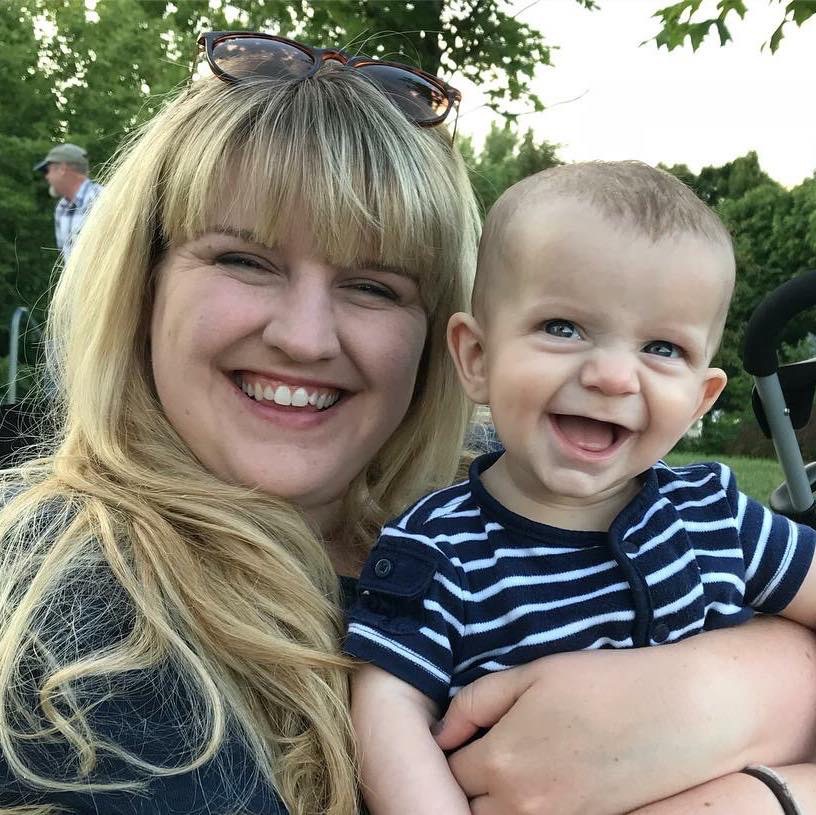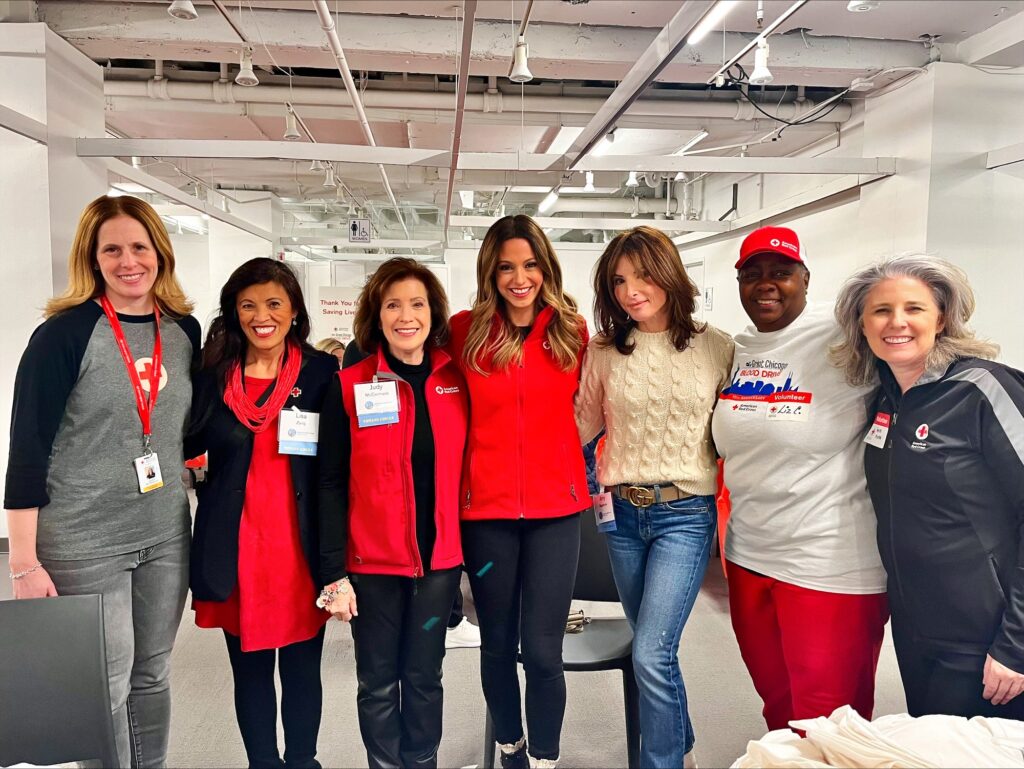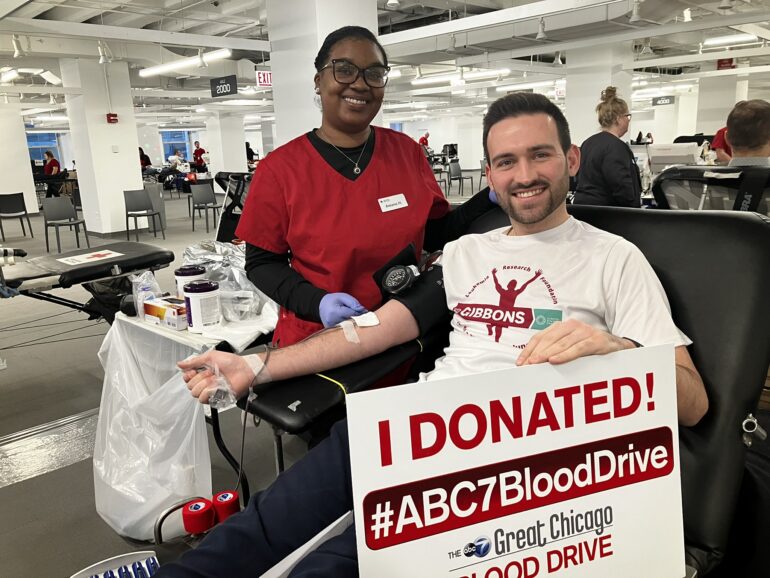I was 16 years old when I discovered the power of civic engagement thanks to the blood drives at my high school in Elgin. Larkin High School held four blood drives a year, and they were much more than just donating blood so that we could get out of class for an hour — they were lifesaving parties that planted seeds of kindness and community in all of us. I didn’t know it then, but those events set me on a path I’d follow for the rest of my life.
Fast forward a few years, I headed off to Iowa State University my freshman year of college. As most college freshmen, I started feeling homesick, which is when my dad advised me on joining a club to get out and meet people. That’s when I joined the Iowa State University Blood Drive Club, home to one of the largest student-run blood drives in the country. What started as a way to get connected to other students turned into a passion that shaped my career. By the time I graduated, my connections with the American Red Cross through these college blood drives opened a door to working with them professionally. It was a perfect fit—a chance to make a difference and continually meet people with hearts of gold.
But it was years later in my role as a mother when I experienced firsthand the lifesaving impact of blood donation. During the birth of my second son, Elliot, complications arose that required immediate platelet transfusions for both of us.
I was suffering from the early stages of preeclampsia, and it was decided it would be best if our son joined us a little earlier than planned. A February snowstorm was raging as I headed to Northwestern Central DuPage Hospital at 36 weeks for pre-operation blood work and steroid shots for the little guy’s lungs. That was when we learned my platelet count had dropped dangerously low due to a condition called ITP (Immune Thrombocytopenic Purpura). My condition was so critical that I was labeled a “fall risk” and urgently prepped for an emergency C-section. The medical team worked against the clock, and thanks to the availability of donated platelets, they stabilized my condition just in time. I had to undergo the procedure under full anesthesia with no guests allowed, as doctors prepared for the possibility of severe complications.

Unfortunately, the challenges didn’t end there. Elliot was born with critically low platelets, a condition caused by my antibodies transferring to him during pregnancy. At just three days old, he needed two platelet transfusions and a dose of IVIG, a product made from the plasma of more than 1,000 blood donors. Thanks to the incredible medical teams at Northwestern, Lurie Children’s and the generosity of blood donors, Elliot recovered, and we were able to bring him home a few days later. Today, he’s a healthy, energetic 7-year-old, though I often remind him that he’s used up his share of blood products and should keep his daredevil antics to a minimum.
This deeply personal experience strengthened my commitment to ensuring that blood products are available when and where they’re needed most. However, there’s a sobering reality: while 5% of the U.S. population donated blood a decade ago, that number has dropped to just 3% even though the FDA has made more inclusive updates to their guidelines, allowing more people to be able to give. The need for blood remains constant, but fewer people are rolling up their sleeves to donate.
Blood donations are essential for NICU babies, mothers in childbirth crises, cancer patients, sickle cell patients, and accident victims. These individuals and their medical teams depend on donors to provide the lifesaving tools they need to fight and survive. Without blood donations, even the most skilled doctors and advanced medical treatments can’t succeed.
That’s why events like the ABC 7 Great Chicago Blood Drive are so important. Taking place January 15-16, 2025, at six locations across the Chicagoland area, this annual event is the largest Red Cross blood drive in the country. It’s not just about collecting blood; it’s about sharing the stories of recipients and showcasing the profound impact donors can have. I encourage you to schedule an appointment to donate blood at this incredible event and be part of a movement that saves lives.

I am also deeply grateful for the Red Cross Tiffany Circle’s sponsorship of this event. It is truly inspiring to see this group of women come together to support blood donation and lifesaving initiatives. Members Kimberly A. Falk, Peggy Hardek, Susan B. Noyes and the Make It Better Foundation, Jill Schaaf, and Christine Tierney have risen to the occasion by issuing a $100,000 matching gift challenge. This collective giving initiative is an amazing example of their generosity and commitment to making a difference. You can amplify their impact by contributing to this matching grant, ensuring that lifesaving blood products are available for those in need.
Blood donors saved my life and my son’s life. Now, it’s my turn to pay it forward and advocate for others to join this vital mission. If you’ve never donated blood, I encourage you to visit a drive and see for yourself. You’ll find a community of people united by a simple yet powerful act of kindness. Whether it’s your first time or your fiftieth, your donation could be the difference between life and death for someone in need.
How To Help
The Tiffany Circle is the Signature Sponsor for the ABC7 Great Chicago Blood Drive, held January 15-16, 2025.
Tiffany Circle members Kimberly A. Falk, Peggy Hardek, Susan B. Noyes and the Make It Better Foundation, Jill Schaaf, and Christine Tierney issued a $100,000 matching gift challenge to members and friends of the Tiffany Circle. This impactful match will secure the funds needed to sponsor this exceptional event.


